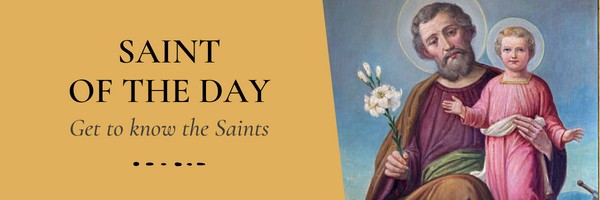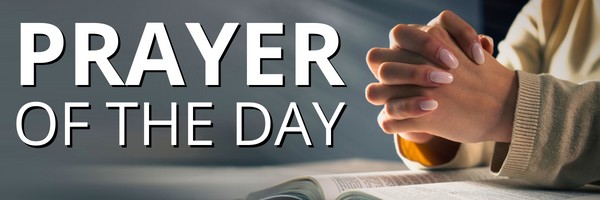We ask you, urgently: don't scroll past this
Dear readers, Catholic Online was de-platformed by Shopify for our pro-life beliefs. They shut down our Catholic Online, Catholic Online School, Prayer Candles, and Catholic Online Learning Resources essential faith tools serving over 1.4 million students and millions of families worldwide. Our founders, now in their 70's, just gave their entire life savings to protect this mission. But fewer than 2% of readers donate. If everyone gave just $5, the cost of a coffee, we could rebuild stronger and keep Catholic education free for all. Stand with us in faith. Thank you.Help Now >
Morocco
FREE Catholic Classes
(Prefecture Apostolic of Morocco).
The country known as Morocco (from Marrakesh, the name of one of its chief cities) forms the northwest corner of the Continent of Africa, being separated from French Algeria by an imaginary line, about 217 miles in length, running from Nemours to Tenish es Sassi. It is the Gatulia or Mauretania Tingitana (from Tingos = Tangier) of the ancient Romans. The natives call it Gharb (West), or Magreb el Aksa (Extreme West). The total area is a little more than 308,000 square miles; the population, about 10,000,000. Excepting Abyssinia, it is now the only independent native state in Africa, and is one of the most difficult countries for Europeans to penetrate. Though Morocco is often spoken of as an empire, the authority of the sovereign is a mere fiction throughout the greater part of its territory, which is, on this account, divided, more or less precisely, into the Bled el Maksen , or "country subject to taxes", and Bled es Siba , or "unsubdued country". Physically, the surface is broken up into three parallel mountain-chains: the most important of these, the Great Atlas, forms a plateau, forty to fifty miles in width, from which rise peaks, often snow-clad, 10,000 to 13,000 feet high. Facing the Mediterranean are the mountains of the Riff, below which stretches the well-watered and fertile range of the Tell. On the other side, to the extreme south lies the arid Sahara, broken only by a few oases. Between the Mediterranean littoral and the Sahara, the Atlas Plateau, broken by ravines and valleys, rivers and smaller streams, contains many tracts of marvellously fertile country. The sea-coast of Morocco is for the most part dangerous, and offers few advantages for commerce. The best harbours are those of Tangier, Mogador, and Agadir. El Araids, or Larache, and Tangier are the maritime outlets for Fez, which is one of the three capitals of Morocco, the other two being Marrakesh and Meknes. Owing to the high mountains, the sea breezes and the openness of the country, the climate is healthy, temperate, and equable. The temperature is much higher in the south than in the north, the heat, in certain districts, becoming at times insufferable. The soil is adapted to every kind of crop, and sometimes yields three harvests a year. Cattle-breeding is also carried on. There is very little industry, and commerce is chiefly in the hands of Europeans and Jews.
From the earliest period known to history, Morocco has been inhabited by the Berbers (whence the name Barbary ). These people were known to the Romans as Numidae , but to the Phoenicians as Mahurin (Westerners); from the Phoenician name the Greeks, and, after them, Latin writers, made Mauri , whence the English Moors . These Moors, Numidians, or Berbers, were subjugated by the Romans, then by the Vandals, the Byzantines, the Visigoths, and, lastly, the Arabs, whose political and religious conquest began in 681. Arabs and Berbers together crossed over into Spain, and thence into France, where their progress was stopped at Poitiers (732) by Charles Martel. Not until 1492, when Granada fell, were the Christians of the Iberian Peninsula definitively rid of the Moors on European soil, and able to carry the war against them into Africa. Portugal no longer retains any of her possessions in Morocco; but Spain still holds eight ports, known as the presidios , one on the Atlantic Coast and seven on the Mediterranean. Besides the Berbers, the population of Morocco includes Jews, who in all the cities are confined to separate quarters ( mellah ), Sudanese negroes, mostly slaves, and Europeans engaged in commerce on the coast, chiefly at Tangier and Mogador. For two hundred years Morocco has been ruled by a dynasty of Arab sherifs, who claim descent from Ali, the uncle and son-in-law of Mohammed. The sherif, or sultan, is theoretically supreme in both temporal and spiritual affairs, his wishes being carried out by viziers, or secretaries, in the various branches of the administration ( maghzen ). As a matter of fact, the normal condition of the country is revolution and anarchy. In 1906 the International Conference of Algeciras provided for a combined French and Spanish system of police, but the Morocco question is still (1910) unsettled.
With the exception of the European residents, the segregated Jews mentioned above, and a body of aborigines (Berbers), living in the Atlas, who have proved refractory to Islam, the whole population of Morocco is Mohammedan, and is inaccessible to Christian propaganda. The first Catholic mission to this country was organized in 1234, when Father Angelo, a Franciscan friar and papal legate , was appointed Bishop of Morocco. The succession lasted until 1566, when the see was suppressed, and its jurisdiction given to the Archbishop of Seville. In 1631 the Prefecture Apostolic of Morocco was founded; its first incumbent, Blessed Giovanni da Prado, O.F.M., was martyred at Marrakesh in that year, and his feast is kept by the Franciscan Order on 29 May. Other missionaries continued to exercise their ministry through trials and persecutions of every kind until 1859, when the prefecture was reorganized on its present basis. It is administered by the Franciscans of the College of Compostela. There are in Morocco about 10,000 Catholics nearly all Europeans ; 24 missionaries, 8 stations (in the leading ports), 16 schools, with 1200 children, and a hospital at Tangier, where the prefect Apostolic resides.
Join the Movement
When you sign up below, you don't just join an email list - you're joining an entire movement for Free world class Catholic education.
An Urgent Message from Sister Sara – Please Watch
- Advent / Christmas
- 7 Morning Prayers
- Mysteries of the Rosary
- Litany of the Bl. Virgin Mary
- Popular Saints
- Popular Prayers
- Female Saints
- Saint Feast Days by Month
- Stations of the Cross
- St. Francis of Assisi
- St. Michael the Archangel
- The Apostles' Creed
- Unfailing Prayer to St. Anthony
- Pray the Rosary
![]()
Copyright 2025 Catholic Online. All materials contained on this site, whether written, audible or visual are the exclusive property of Catholic Online and are protected under U.S. and International copyright laws, © Copyright 2025 Catholic Online. Any unauthorized use, without prior written consent of Catholic Online is strictly forbidden and prohibited.
Catholic Online is a Project of Your Catholic Voice Foundation, a Not-for-Profit Corporation. Your Catholic Voice Foundation has been granted a recognition of tax exemption under Section 501(c)(3) of the Internal Revenue Code. Federal Tax Identification Number: 81-0596847. Your gift is tax-deductible as allowed by law.









